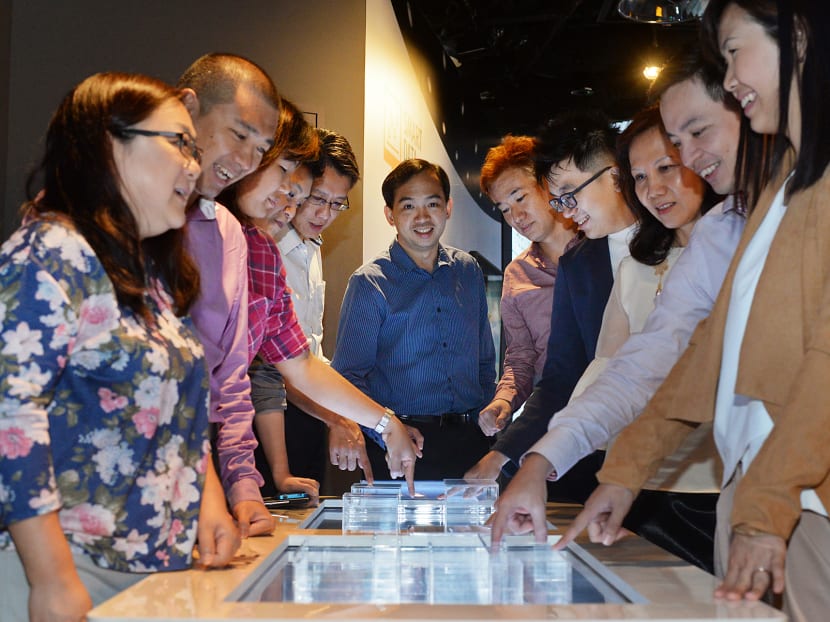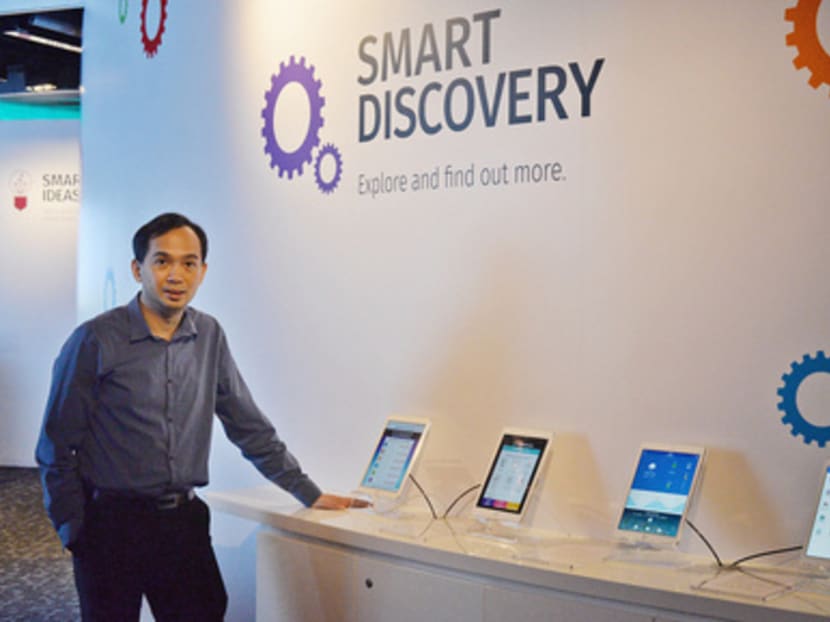Using data to empower the disadvantaged
SINGAPORE — On paper, or more accurately, a computer screen, it is a stream of numbers and letters.


SINGAPORE — On paper, or more accurately, a computer screen, it is a stream of numbers and letters.
But when Smart Nation Programme Office head Tan Kok Yam looks at data sets, he sees the potential for improving human lives — be it helping the mobility-challenged such as wheelchair-riders access transport options, or alerting residents when their elderly neighbour next door falls and needs help.
As Singapore marches on in its drive to become a Smart Nation, Mr Tan hopes to see technology being used by the community to help the disadvantaged catch up.
For example, much has been made of the potential of using data to make public transport more efficient — by aggregating demand for a single destination, and developing services that adapt to such demands. But equally important are mobile applications such as Come Ride With Me, which matches the disabled to volunteers around their area who can help them get to their public transport destinations.
Created by six friends using data from the Land Transport Authority (LTA), the prototype was the winning entry in a hackathon held by the LTA in April. Speaking to TODAY in an interview, Mr Tan said such technologies have the potential to solve societal problems on a large scale.
“The whole point is not so much digitising services, but serving people better … If you look at the mobility-challenged and how a successful autonomous system can help them socially get from place to place in a practical way, you can see how technology is intimately tied to the community and people’s lives,” said Mr Tan.
‘Many Helping Hands’ in the smart nation era
In recent years, the Government has been releasing more data to the public to encourage the creation of new apps, or solutions to help others, said Mr Tan. For example, the LTA publishes transport-related data, such as public transport and geospatial datasets, in its DataMall. Third-party developers can submit their apps in the Apps Zone, where over 35 apps, ranging from those providing bus arrival times to apps where car parks are located, are already featured.
“In a way, rather than looking at an issue and solving that issue from the perspective of ‘this is what the Government thinks we should do’, ‘these are the contractors we should get’, ‘this is R&D we should initiate’, there is also an element of letting the data out and encouraging people to come and look, and play with it,” Mr Tan said.
Another app called myResponder, developed by the Singapore Civil Defence Force and Infocomm Development Authority of Singapore, alerts volunteers in the vicinity if someone is experiencing cardiac arrest. Those with CPR training may render assistance before paramedics get to the scene.
The developer of myResponder is, himself, an emergency responder, Mr Tan noted. It is important to leverage on people’s passion when developing such apps, and when improving on existing solutions. “We should involve the public more in pilots and trials, and really test the feedback (they give us). With technology, you don’t have to agree that the Government’s way is the best way.”
He added: “We may differ with the kind of solutions we provide, but, fundamentally, we’re united in dealing with a societal problem, whether it is transport, ageing, improving our municipal services, or emergency responses.”
This approach, Mr Tan pointed out, cannot work without sufficient users. Hence, apps such as MyResponder should be adjusted accordingly based on feedback to make it more useful.
In the future, areas such as healthcare and sustainability could benefit from smarter technologies, too. Should someone living on their own fall in the shower and sustain a fracture, for instance, detection technology could let their neighbour know that they are in trouble.
No matter how advanced technology is, “it is about solving human problems, or enabling human interactions”, he reiterated.
“We don’t do this because we are celebrating technology — it’s not about technology, or how snazzy that piece of technology is. It’s always about people and the community,” Mr Tan said. LOUISA TANG








